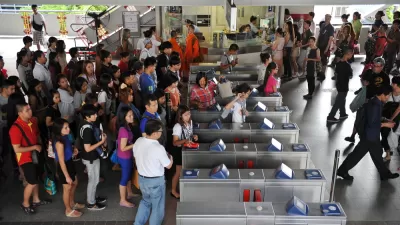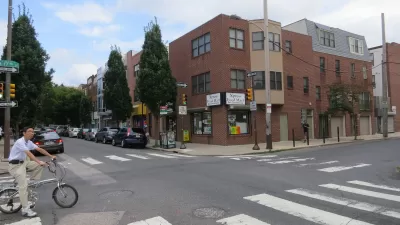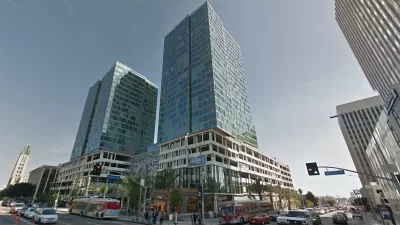Zak Accuardi argues that while mobility services can enhance transit, only walkability can solve the "first and last mile" problem.

TransitCenter analyst Zak Accuardi speaks to the difficulties of getting riders to widely-dispersed transit stops. "Transit's first and last miles generally happen outside of transit agencies' traditional sphere of concern — operating buses or trains — and thus demand sustained coordination with other governmental actors, especially at the municipal level."
Accuardi maintains that mobility services like rideshare can alleviate the problem, but only so much. He suggests that planners prioritize pedestrian access. "Improving street network connections that make walking to transit easier is among the most useful and cost-effective first and last mile strategies."
"Removing barriers to walking and TOD are likely to yield better ridership and financial return on investment than others designed to draw transit riders from suburban environments—the transportation equivalent of swimming upstream." But in cities designed around the suburban model, that's easier said than done.
FULL STORY: Transit is Made for Walking

Maui's Vacation Rental Debate Turns Ugly
Verbal attacks, misinformation campaigns and fistfights plague a high-stakes debate to convert thousands of vacation rentals into long-term housing.

Planetizen Federal Action Tracker
A weekly monitor of how Trump’s orders and actions are impacting planners and planning in America.

San Francisco Suspends Traffic Calming Amidst Record Deaths
Citing “a challenging fiscal landscape,” the city will cease the program on the heels of 42 traffic deaths, including 24 pedestrians.

Defunct Pittsburgh Power Plant to Become Residential Tower
A decommissioned steam heat plant will be redeveloped into almost 100 affordable housing units.

Trump Prompts Restructuring of Transportation Research Board in “Unprecedented Overreach”
The TRB has eliminated more than half of its committees including those focused on climate, equity, and cities.

Amtrak Rolls Out New Orleans to Alabama “Mardi Gras” Train
The new service will operate morning and evening departures between Mobile and New Orleans.
Urban Design for Planners 1: Software Tools
This six-course series explores essential urban design concepts using open source software and equips planners with the tools they need to participate fully in the urban design process.
Planning for Universal Design
Learn the tools for implementing Universal Design in planning regulations.
Heyer Gruel & Associates PA
JM Goldson LLC
Custer County Colorado
City of Camden Redevelopment Agency
City of Astoria
Transportation Research & Education Center (TREC) at Portland State University
Jefferson Parish Government
Camden Redevelopment Agency
City of Claremont





























